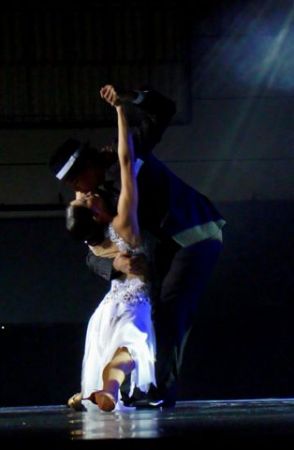| Travel Argentina | « previous | index | next » |
|
Or Tango and Romance ..
Topic And now Tango Tours
Buenos Aires is the city of Tango. There’s no argument on this matter –may be with those who live in Montevideo, Uruguay, who as our brothers in culture share many of our traditions and dances. In these days in which this gorgeous river port side city welcomes visitors from all over the world, sometimes I find myself trying to explain things that have been so naturally always like this all my life. One of these traditions is Tango. Social and sensual par excellence this typical “Portenan” dance and music has been part of my daily life for as long as I can remember, though I never wondered about its way of being… to me it was just there. However in recent months as I began looking deeply into my culture thanks to the constant cultural exchange we are going through.
I first discovered –to my deep surprise- that the word tango has an African origin. It has been one of those wicked things to learn about. Why African, especially if the Afro Argentinean population is not so big in Buenos Aires?
A bit of history and culture helped me clear this matter up. During the 19th century our country received a huge immigration flow from all over the world, and Africans did came to Argentina, some were slaves, some others former slaves who were looking for a place to begin a new life, and since Buenos Aires was one of the latest cities of Colonial Latin America to develop, and one of the first to be independent from the Spanish. Afro Argentineans worked in the heart of the city, the port side area –today’s San Telmo and La Boca quarters- and had a deep cultural influence: dances –malambo, tango, candombe or barilo (the proper Argentinean version, nowadays pretty much extinguished); food –mondongo, chinchulines, and language –mandinga, etc-.
All and all, I wasn’t that convinced that the Argentinean Tango was a translation of an African dance, specially if we consider the fact that there are no similar dances to Tango in any African country. In spite of that, we can trace influences from other dances such as the Candombe – a sexy rhythm moving to the beat of drums- as well as the famous Afro Cuban dance known as Habanera –influencing the languid type of dance.
I kept on trying to get to know what till recently was natural and properly ours.
After some reading and –many, many- questions to those specialized in the matter I began to tie some loose ends.
Tango was –and still is- a popular dance, of the lower classes. At first it was danced among men. Some people say that this dance was the entertainment lower class men had while awaiting their turn in the local cabaret… Strange and funny the hypotheses that have arose around this matter, though none of these was confirmed, and may be they would never will, for popular classes traditions were not documented until recent times and there are not many other sources to turn to.
Nonetheless, we do know that the music and dance developed side by side, one depending and being influenced by the other.
One other information we have is that during its early years tango music had no lyrics, these were a latter addition to a developed musical base. And thought it was –and still is- a rich rhythm and composition, it was depicted by the educated Argentinean classes even until the early 1902. This only began to change when this new and innovative was welcomed and appreciated in Europe.
Tango –as all, dance, music, rhythm, and culture- kept on developing and growing until today and it’ll hopefully will keep it on. This states how much this is a live dance and spirit that evolves and recreates itself.
Though during the 70s, 80s and early 90s tango was a bit forgotten, even more to the younger generations, from mid 90s until recently it has regained its place in local culture with renewed power and strength.
This statement is crystal clear when one tours around the “milongas portenas” any night of the week. They are packed with young and talented dancers –as well as experienced older ones too- who have learnt how to cross their modern culture with their mother culture… Dressed in eclectic outfits, these many couples –some wearing sneakers, some the proper shoes- twirl around the main dance floor bewitching the inexperienced dancers who admire their talent and Chemistry… those couples we want to emulate when we achieve our first combination of steps.
For more information :Email: The
Buenos Aires Art Dealer, Bob Frassinetti.
Press here to go to the Buenos Aires Art Dealer, San Telmo Section :The Buenos Aires
Art Dealer. San Telmo.
Press here to go to the Buenos Aires Toy Museum :The Buenos Aires
Toy Museum, Argentina.
Press here to read Daily updates on Art, Antiques and Collectibles :Everything on Antiques and Art in Argentina, Chile and Uruguay.
Bob Frassinetti. Copyright 2005. Updated in 2009, Buenos Aires, Argentina.
Roberto Dario Frassinetti.
|
